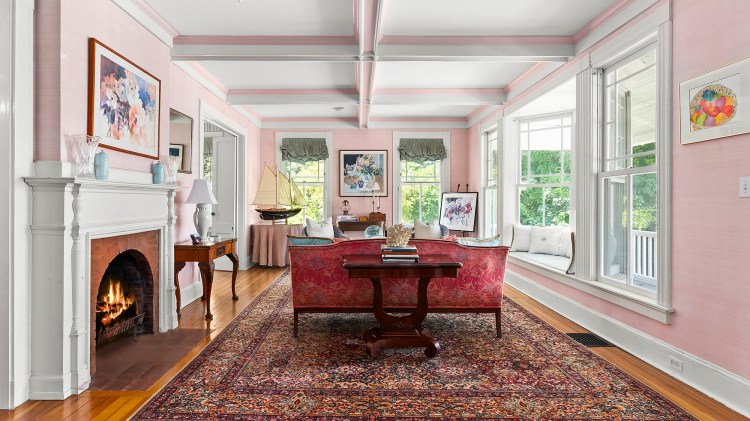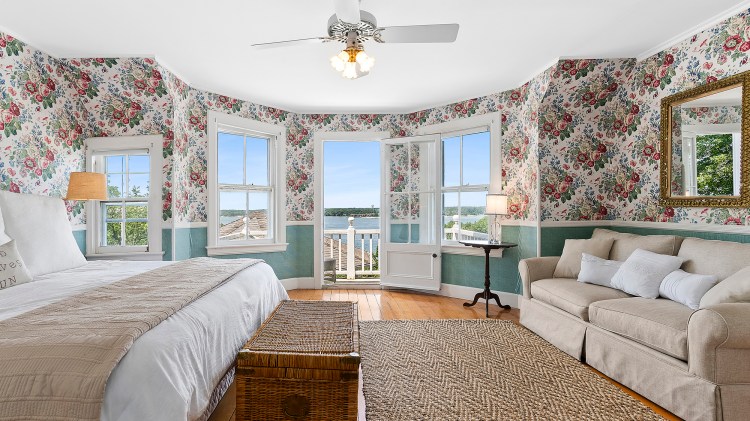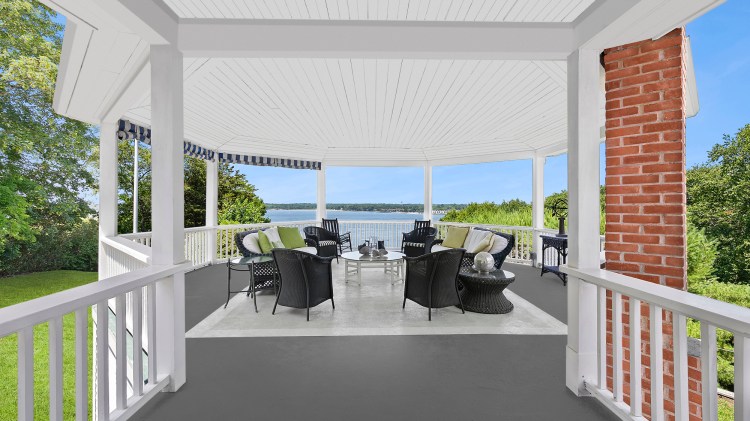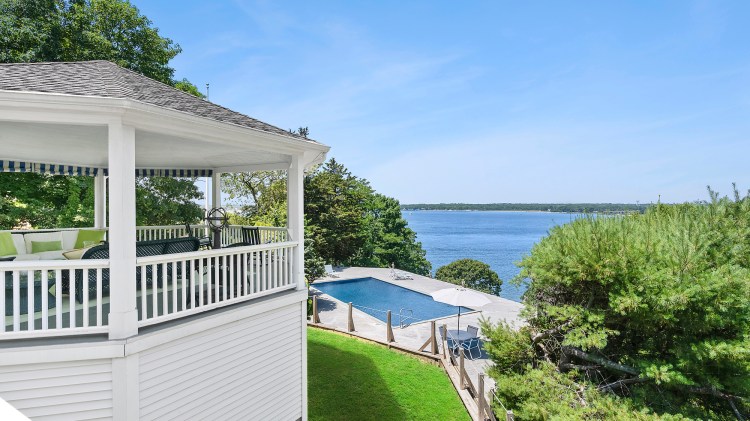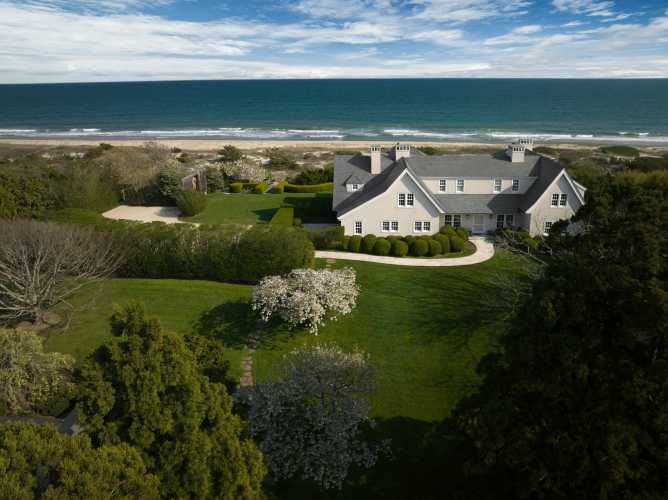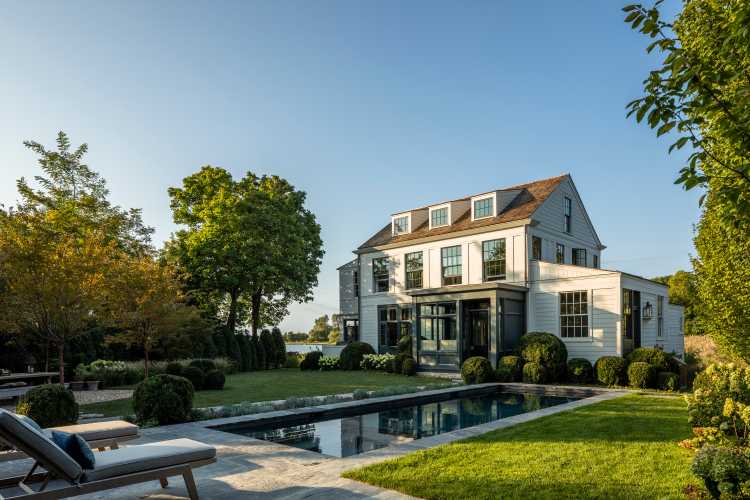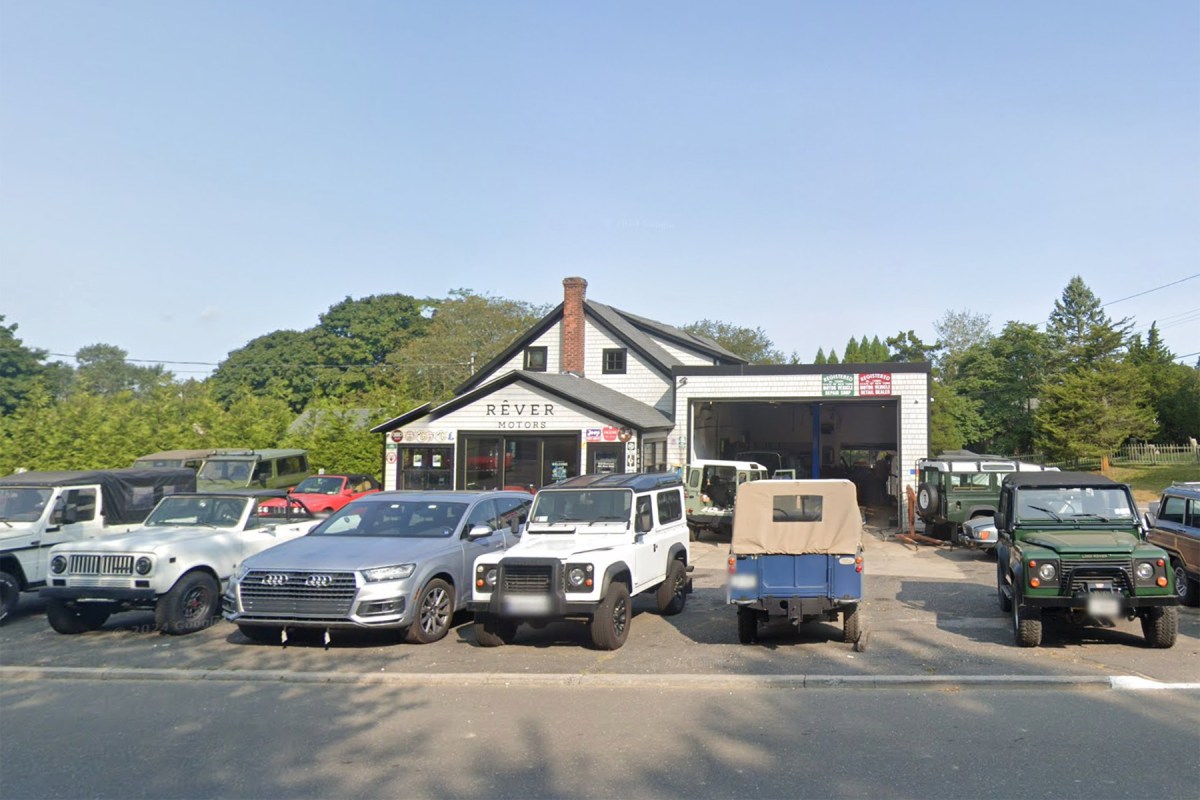On a clear day, the view from “Aquarelle,” a historic 5,000-square-foot waterfront home on Shelter Island Heights, stretches well past Pipes Cove and out to the Long Island Sound and the Connecticut shoreline.
The term aquarelle refers to a watercolor painting technique. When current owners Dan and Olive Reich bought the house and the 1.2-acre property in 1974, they gave the stately home its name as a nod to Olive, an acclaimed watercolor artist whose work has appeared in the Metropolitan Museum of Art, The Brooklyn Museum, Guild Hall and many other institutions.
In addition to stunning views of the Sound and direct access to the beach from the grounds, the house offers seven bedrooms and six baths, a recently updated pool and patio, a formal dining area, expansive covered decking and a detached two-car garage. The lower level includes a separate finished living space which can be used as a guest apartment or home office and includes its own kitchenette and bath.

The home is being offered at $5.45 million by listing agent Barry McGovern of Hedgerow Exclusive Properties.
Though the property has been known as Aquarelle for half a century, its history stretches back much further. In 1883, the house at what is now known as 20 Prospect Avenue was one of three original homes built for Methodist ministers who came to worship at nearby Union Chapel in the Grove (which had been founded a decade earlier in 1872).
Formerly known as Divinity Hill, the Shelter Island Heights area that includes present-day Prospect Avenue was named for those 19th-century clergymen, including the original owner of the property. The area has since been recognized as a national historic site.
Aquarelle has been significantly expanded and renovated over the years, though many of the period details are still intact, including original moldings, mantels and doors.
Highlights include a large and inviting kitchen that the Reichs created out of what at the time was a pocket-sized kitchen area, a butler’s pantry and a small dining area.
Go back even further into the house’s rich history and you’ll find an interesting omission. According to McGovern, the original homes on Divinity Hill did not have kitchens. Residents would either get together at the Chequit Inn for communal meals or have their food delivered by donkey cart. (Who needed Uber Eats or DoorDash in the late 19th century?)

In another homage to a bygone era, the house includes an expansive covered porch, which once served as a gathering place during the day and a sleeping porch on hot summer nights before air conditioning was invented.
As the listing accurately notes, “The details evoke a sense of nostalgia, connecting you to the past while offering modern comforts.”
While they were preparing to sell the house they’ve owned since 1974, the Reiches found a clipping of a story about their home. The writer had clearly interviewed the couple for the story and also conducted some fairly extensive research about the history of the property. But sadly, the name of the author, the publication in which the story appeared and the exact publication date have all been lost to the dustbin of history. However, based on the dates referenced in it, the piece was probably written in 1993 or 1994.
The article contained some great anecdotes and factoids. For example, we learn in the opening paragraph that Olive and Dan Reich were “only the fifth owners of this ministerial manse – one of three that gave Divinity Hill its name,” and that the property was built on “one of the highest – and coolest – spots on the Island.”
We also learn that the large hexagonal sleeping porch was originally installed by a “Mr. Lightfoot, who built minesweepers in Greenport during World War II.” And that, “The graining of the Carolina pine in the dining room was matched with pine found underwater in a Florida swamp.”

“From sill to sill, rafter to rafter, floor to ceiling, the house blooms with flowers,” the story notes. “Against this flowering backdrop of pink, peach and blue, the Reiches have furnished their hilltop house with loved childhood objects from three generations of family households in Bay Ridge, Brooklyn; with antiques and whimsies bought at yard sales and flea markets, with an accumulation of furnishings acquired from previous owners – a custom and tradition that still prevails when a house is sold in the Heights.”
Check out more photos below.
This article appeared in the Labor Day weekend issue of Behind The Hedges inside Dan’s Papers. Read the full digital edition here.
